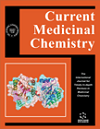
Full text loading...
We use cookies to track usage and preferences.I Understand
Several chronic liver injuries can result in liver fibrosis, a wound-healing response defined by an excessive buildup of diffuse extracellular matrix (ECM). Liver fibrosis may progress to liver cirrhosis, liver failure, or hepatocellular carcinoma. Many cellular routes are implicated in the fibrosis process; however, hepatic stellate cells appear to be the main cell type involved. Curcumin, a polyphenolic substance extracted from the Curcuma longa plant, has a diversity of pharmacologic impacts, including anti-inflammatory, antioxidant, antiproliferative and antiangiogenic actions. The anti-fibrotic property of curcumin is less clear, but curcumin's ability to influence inflammatory cytokines, inflammatory pathways, the expression of pro-apoptotic (up-regulated) and anti-apoptotic (down-regulated) proteins, and its ability to lower oxidative stress likely underlie its anti-fibrotic properties. In this review, we investigate and analyze the impact of curcumin on several disorders that lead to liver fibrosis, and discuss the therapeutic applications of curcumin for these disorders.

Article metrics loading...

Full text loading...
References


Data & Media loading...

